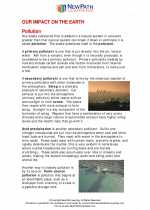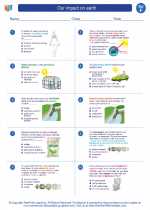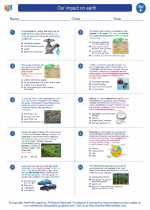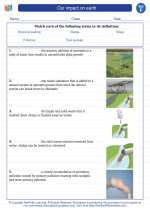Coal: Formation and Uses
Coal is a combustible black or brownish-black sedimentary rock formed from the remains of ancient vegetation which has been subjected to heat and pressure over millions of years. It is a non-renewable energy source that has been used for centuries for various purposes.
Formation of Coal
Coal is formed from the remains of plants that lived and died in swamps and marshes. Over time, the plant remains were buried under layers of sediment. As more and more sediment accumulated, the heat and pressure from the layers above caused the plant material to undergo chemical and physical changes, eventually transforming it into coal.
Types of Coal
There are four main types of coal: lignite, sub-bituminous, bituminous, and anthracite. These types differ in their carbon content, energy content, and usage.
- Lignite: This is the lowest quality and most crumbly coal. It has the lowest carbon content and is used mainly for electricity generation.
- Sub-bituminous: This type of coal is black in color and has a higher energy content than lignite. It is used primarily for electricity generation and heating.
- Bituminous: Bituminous coal is the most abundant and widely used coal. It is used for electricity generation, steel production, and as a source of heat.
- Anthracite: Anthracite is the highest quality coal, with the highest carbon content and energy content. It is used primarily for heating and in the production of steel.
Uses of Coal
Coal has been used for various purposes, including:
- Electricity generation
- Heating
- Steel production
- Cement manufacturing
- Chemical production
Environmental Impact
While coal is a valuable energy resource, its use has significant environmental impacts, including air and water pollution, as well as greenhouse gas emissions that contribute to climate change. Efforts are being made to develop cleaner technologies and alternative energy sources to mitigate these impacts.
Study Guide Questions
- What is coal and how is it formed?
- What are the main types of coal and how do they differ?
- What are the primary uses of coal?
- What are the environmental impacts of coal use?
- What efforts are being made to address the environmental impacts of coal?
By understanding the formation, types, uses, and environmental impact of coal, we can appreciate its significance as an energy resource and the need to explore sustainable alternatives.
[Coal] Related Worksheets and Study Guides:
.◂Science Worksheets and Study Guides Sixth Grade. Our impact on earth

 Worksheet/Answer key
Worksheet/Answer key
 Worksheet/Answer key
Worksheet/Answer key
 Worksheet/Answer key
Worksheet/Answer key
 Vocabulary/Answer key
Vocabulary/Answer key
